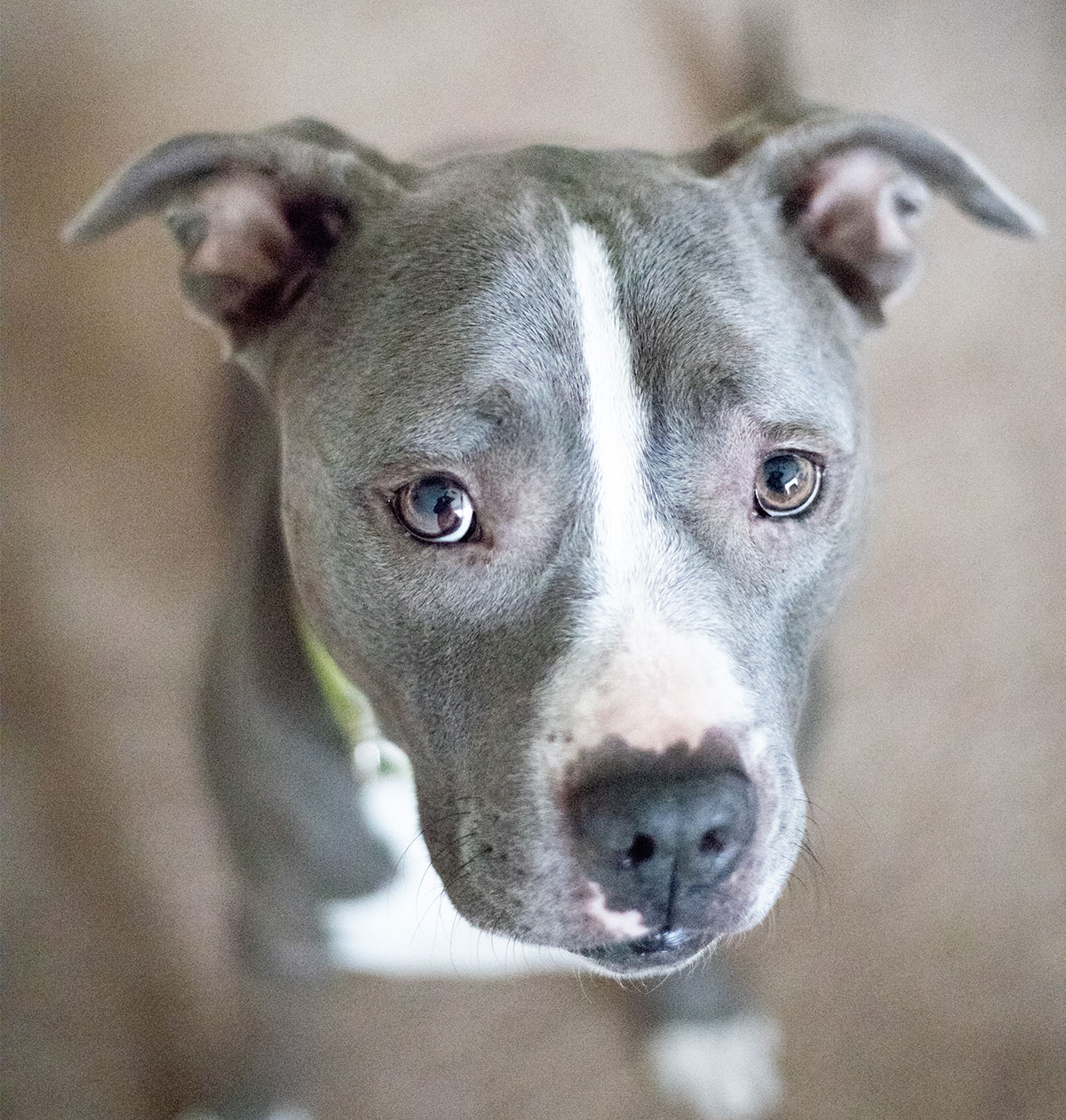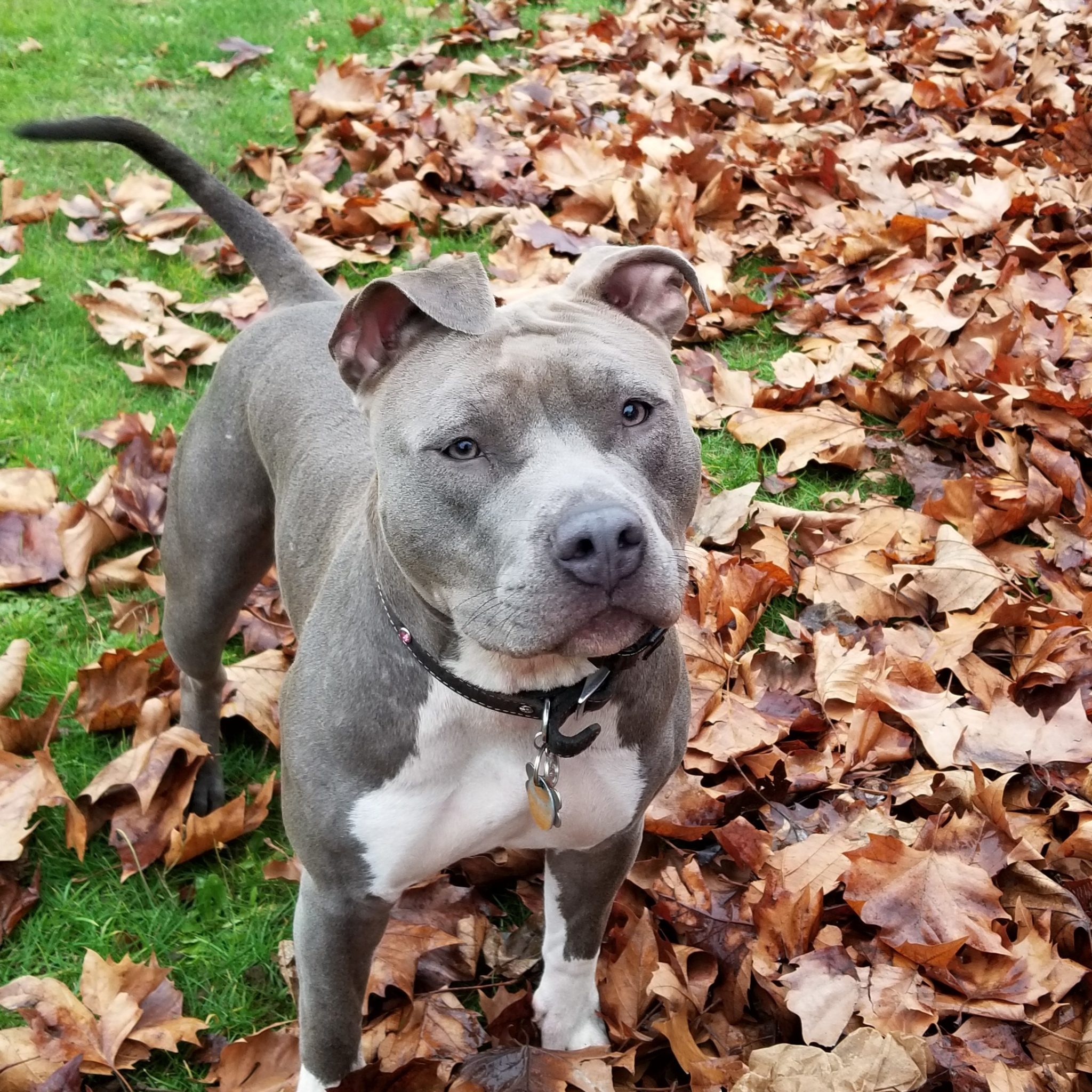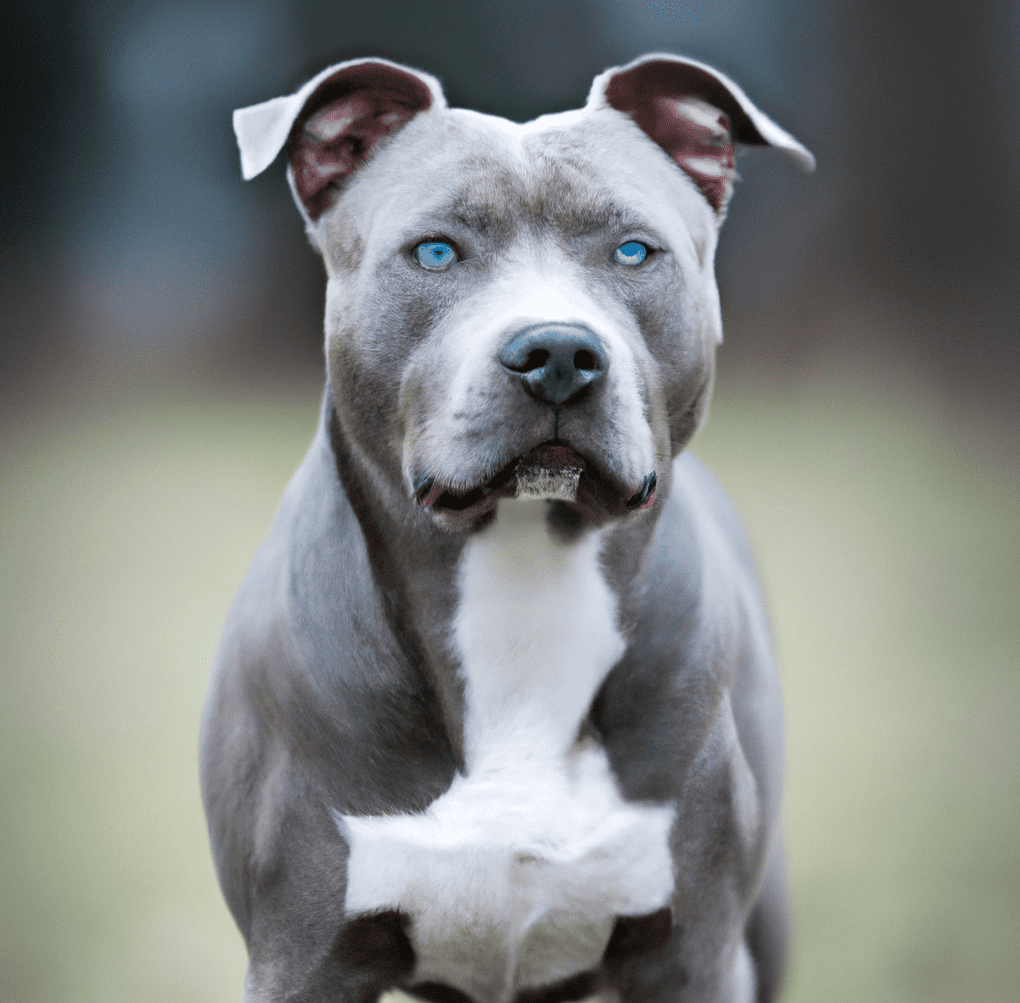Blue Nose Pitbull - Your Guide To This Special Dog
Have you ever seen a dog with a coat the color of a stormy sky and a nose to match? That, you know, is a blue nose pitbull, a truly striking animal that catches many people's eye. These dogs are a special kind of American Pit Bull Terrier, known for their loyal spirit, strong bodies, and very loving way of being. They've become quite popular as pets lately, mostly because of their standout looks and how devoted they can be. This article will help you get a better sense of what these wonderful dogs are all about.
There's a lot to unpack when we talk about these dogs, from what makes their appearance so distinct to how they act around people. We'll explore where they come from, what they're generally like, and how to look after them properly. You'll find out why they're sometimes hard to find, why they can cost a bit more, and why there's often quite a bit of chatter surrounding them. We'll also touch on ways to make sure you're getting a healthy pup and avoiding any tricky situations with breeders, too it's almost.
Basically, if you're thinking about bringing a blue nose pitbull into your life, or you're just plain curious about these amazing creatures, this guide is for you. We'll share important details about their disposition, what kind of care they need, and what you should think about before getting one. So, let's learn all about the blue nose pitbull, a variation of the American Pit Bull Terrier that truly stands out with its unique blue nose and coat.
Table of Contents
- What Makes a Blue Nose Pitbull Unique?
- Where Do Blue Nose Pitbulls Come From?
- Caring for Your Blue Nose Pitbull - What You Need to Know
- Are Blue Nose Pitbulls a Good Fit for Families?
- The Truth About Blue Nose Pitbulls - Separating Fact from Fiction
- Finding a Blue Nose Pitbull - What to Look For
- Why Are Blue Nose Pitbulls So Talked About?
What Makes a Blue Nose Pitbull Unique?
The blue nose pitbull is a very distinct kind of dog, mainly because of its appearance. What sets them apart is their coat, which is often a shade of gray that looks blue, and, of course, their nose, which also has that same cool, bluish-gray color. This particular coloring is a result of a special gene, a recessive one, which means both parent dogs must carry this gene for the puppies to show this trait. This makes them a bit more uncommon, as they come from a somewhat smaller group of dogs that have these specific genes. Many people, you know, sometimes think of the blue nose pitbull as its own breed, but in reality, they are just a less common form of the American Pit Bull Terrier, which is what most folks call a "pitbull" or "pit."
These dogs usually weigh somewhere between 30 to 60 pounds and stand about 17 to 21 inches tall at the shoulder. They have a body that looks strong and capable, reflecting their athletic background. Beyond their looks, their way of being is often described as very loyal and full of affection. They are known for forming strong bonds with their people, and are often quite good with those they consider family. This combination of a striking look and a loving spirit is, you know, a big part of why they've become so sought after as pets.
Where Do Blue Nose Pitbulls Come From?
To understand the blue nose pitbull, it helps to know a little about their background. They are, essentially, a color variation of the American Pit Bull Terrier. This breed, in its broader sense, has roots in older English dogs, often created by mixing Old English Bulldogs and Terriers. The goal was to produce dogs with the strength of the bulldog and the quickness of the terrier. Over time, these dogs made their way to America and became what we now recognize as the American Pit Bull Terrier. The blue nose variation just happens when that specific recessive gene for blue coloring is present. So, in a way, they share the same history as their more commonly colored relatives, just with a special coat. It's not, you know, a separate origin story for the blue nose itself, but rather a unique expression within the existing breed lines.
- Riley Green The Country Star Who Proudly Stands As A Trump Supporter
- 2 Black Men Kissing Meme
- Clint Harp Designs
- Jayne Marie Mansfield
- 3 People 1 Hammer
Caring for Your Blue Nose Pitbull - What You Need to Know
Looking after a blue nose pitbull means understanding their general health needs, what makes them tick, and how to keep them happy. These dogs, like all living things, need proper attention to stay well. This includes a good diet, regular exercise, and consistent trips to the animal doctor for check-ups and shots. Because they are a specific kind of American Pit Bull Terrier, they share many of the same health considerations as the broader breed. Some of these might include certain skin issues or joint concerns, which, you know, are fairly common for many larger, active dogs. Being aware of these possibilities means you can be ready to give them the best care if something comes up.
When it comes to their disposition, blue nose pitbulls are often described as having a lot of heart. They can be quite energetic and enjoy activities that let them use their bodies and minds. This means they benefit from things like walks, playtime, and even some basic training exercises. Providing them with opportunities to be active helps keep them balanced and content. Also, their coats are relatively easy to care for, needing just regular brushing to stay clean and healthy looking. Basically, consistent attention to their physical and mental needs is key to a happy blue nose pitbull.
Are Blue Nose Pitbulls a Good Fit for Families?
Many people wonder if a blue nose pitbull makes a good family member. From what many owners say, these dogs can be incredibly loving and devoted to their human companions. They often show a great deal of affection and enjoy being part of the family's daily life. Their loyal nature means they tend to bond closely with their people. However, like any dog, their behavior is also shaped by how they are raised and trained. Early experiences, you know, make a big difference. Socializing them from a young age, letting them meet different people and other animals in a safe way, can help them grow into well-adjusted adults. With proper guidance and a loving home, a blue nose pitbull can certainly be a wonderful addition to a family, bringing a lot of warmth and joy.
The Truth About Blue Nose Pitbulls - Separating Fact from Fiction
There are many ideas floating around about blue nose pitbulls, as there are with most dogs of this type. Some of these ideas are not quite accurate. For instance, as we mentioned, some folks think they are a completely separate dog breed, when they are, in fact, a color variation of the American Pit Bull Terrier or sometimes an American Staffordshire Terrier, or a mix of both. This distinction is important because it means their fundamental qualities and needs are similar to other dogs within these broader groups, just with a different coat color. It's like saying a person with red hair is a different species; they're still human, just with a unique hair color. That, is that, a pretty good way to think about it.
Another common thought is that because they are "rare," they must be fragile or somehow less robust. The truth is, while the blue coloring comes from a recessive gene and they might be bred from a somewhat smaller pool of dogs with that gene, it doesn't automatically mean they are unhealthy. Their health is, you know, more tied to responsible breeding practices and general care, just like any other dog. They are often described as having a mixture of strength, good looks, and a big heart, which is a testament to their true nature rather than any myths. Understanding these dogs means looking past the common talk and focusing on what they really are.
Finding a Blue Nose Pitbull - What to Look For
If you're thinking about getting a blue nose pitbull, finding a good, ethical breeder is very important. There are some breeders, like Blue Fire Pits in New York, who focus on producing larger, "XXL" pitbulls with blue or gray coats, along with good muscle and a stable way of being. Other kennels, such as ATL King Pits, specialize in champion blue nose pitbulls and even larger "XXL" blue pitbulls, aiming to raise the bar for this type of dog. These breeders often offer things like a two-year health promise, help with getting the dog to you, and official papers from organizations like the UKC for their blue nose pitbull puppies for sale. It's really important, you know, to find someone who cares about the dogs' well-being.
When you're looking, it's wise to ask a lot of questions about the parents of the puppies, their health history, and how the puppies have been cared for. You want to avoid situations where dogs might be bred too closely related, which can lead to health problems. A responsible breeder will be open about their practices and happy to show you where the puppies live and meet the parents. They should also be able to tell you about the puppies' disposition and what kind of care they'll need. This approach helps ensure you're getting a healthy and well-adjusted blue nose pitbull, rather than falling for any tricky schemes or situations that might not put the dog's health first.
Why Are Blue Nose Pitbulls So Talked About?
Blue nose pitbulls have certainly gained a lot of attention lately, and there are a few reasons why. Their striking appearance is a big part of it; that blue-gray coat and nose are pretty eye-catching. This unique look, combined with stories of their loyal and loving ways, has made them quite popular as pets. People are naturally curious about dogs that look a little different and have a strong, yet affectionate, presence. This curiosity, you know, leads to a lot of discussion and interest.
However, like many dogs that fall under the "bully breed" umbrella, blue nose pitbulls also have some ideas surrounding them that aren't always accurate. This can lead to conversations that are sometimes a bit heated or full of misunderstandings. But, honestly, this amazing dog deserves to be seen for what it truly is: a remarkable variation of a purebred American Pit Bull Terrier or American Staffordshire Terrier, or a combination of both. It's a dog that brings together a powerful presence, a beautiful look, and a very big heart. Learning about their health, what they're like, and how to care for them helps clear up any confusion. It's about looking past the talk and seeing the dog for itself, you know, as a truly special creature.
So, we've explored quite a bit about the blue nose pitbull, from their distinctive appearance and where that unique blue color comes from, to their loving way of being and how they can fit into a family. We've also touched on the importance of finding a good breeder to avoid potential health issues like those from breeding too closely related animals, and how to spot a responsible one. We've talked about their general health, what makes them tick, and tips for looking after them as a family member. We've also cleared up some common ideas, showing that they are a special color of an American Pit Bull Terrier rather than a separate breed. Understanding these things helps anyone thinking about getting one, or just curious about them, get a better picture of what these truly special dogs are like.
- Skarsg%C3%A3rd Family
- Chipfields Latest
- Juliette Lewis
- Sean Astin Net Worth
- 5starsstockscom Value Stocks

Blue Nose Pitbull

Blue Nose Pitbull - Complete Rare Breed Owners Guide - Animal Corner

Do Blue Nose Pitbulls Get Along With Other Dogs